
In this article we present a complete guide on how to combine Calisthenics and Gym, both for calisthenics athletes who want to combine with weights, and for gymbros who want to combine with calisthenics. I'm going to try to make the guide as complete as possible and touch on all the important points so that it's useful to you, so without further ado, let's get started.
Why combine them?
First, let's talk about why combine these two disciplines. I think the most important thing is that you do it if you practice one of the two and the other catches your attention.
For example, there are many cases of people who go to the gym, but the ability of calisthenics athletes to do muscle up, handstand, planche, front lever, etc. is very interesting and would like to try and see how it goes. It also happens with calisthenics athletes who usually train in the park, but in winter they sign up for a gym to be able to train more comfortably and use some of the machines, dumbbells or free weights.
Also another very common case is that of people who go to the gym and find it extremely boring and monotonous, while calisthenics seems very fun. And the same with calisthenics athletes who have been on the bars for many years, and need a change or a different stimulus.
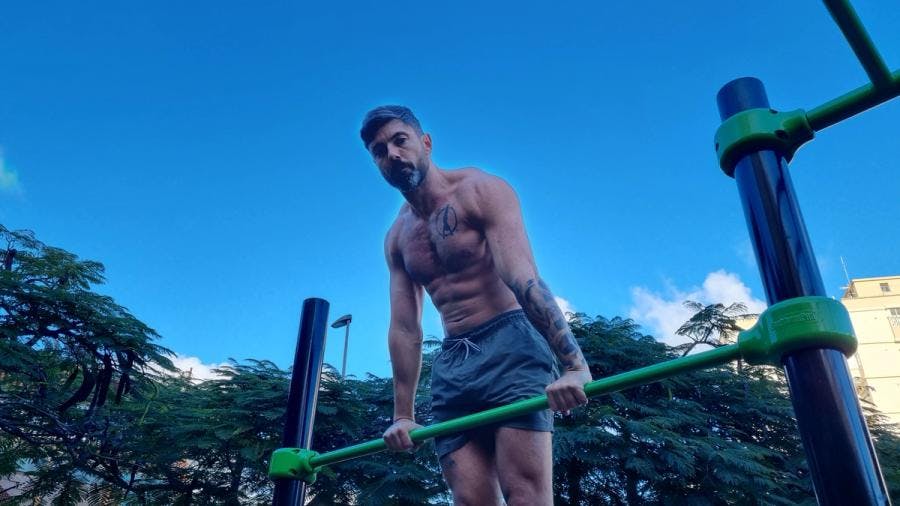
Also, regarding the main golas I think it is important that you only combine both disciplines if it is in line with your objectives. For example, if you are in the gym and one of your goals is to improve your body control, your agility, or learn some skills, it is a perfect fit to combine with calisthenics. Or if you are a calisthenic athlete and one of your goals is to improve your aesthetic appearance or increase your maximum strength, it is also a perfect match.
However, if, for example, you are a calisthenic athlete and your goal is to focus on improving planche and front, or statics and dynamics, it does not make much sense for you to combine.
Another important issue, which we already mentioned before, is convenience. Perhaps your discipline is calisthenics but you live in a very cold and rainy place and it is convenient for you to train in the gym a few days, or perhaps what you like is going to the gym but it is too far away and you have a calisthenics park next to your home, or some days you don't have time and prefer to stay at home training. These are cases in which you could get a lot out of combining both disciplines.
Finally, experience has taught me that there is an important psychological issue, which is that some calisthenics athletes think that to get really big they need to lift weights, or to grow their legs, and no matter how much you try to argue against that belief they have it in their brain and you are not going to convince them.
The same happens with people who go to the gym and, for example, feel that no matter how much they train their backs, the stimulus that pull-ups give them is not given by any machine or weight, and they are totally convinced of this. In those cases, I think it's great that they combine, since in the end the important thing is that you are happy with your training and feel that it is really effective, and the possible, let's say, placebo effect that this entails, will be really useful and beneficial. .
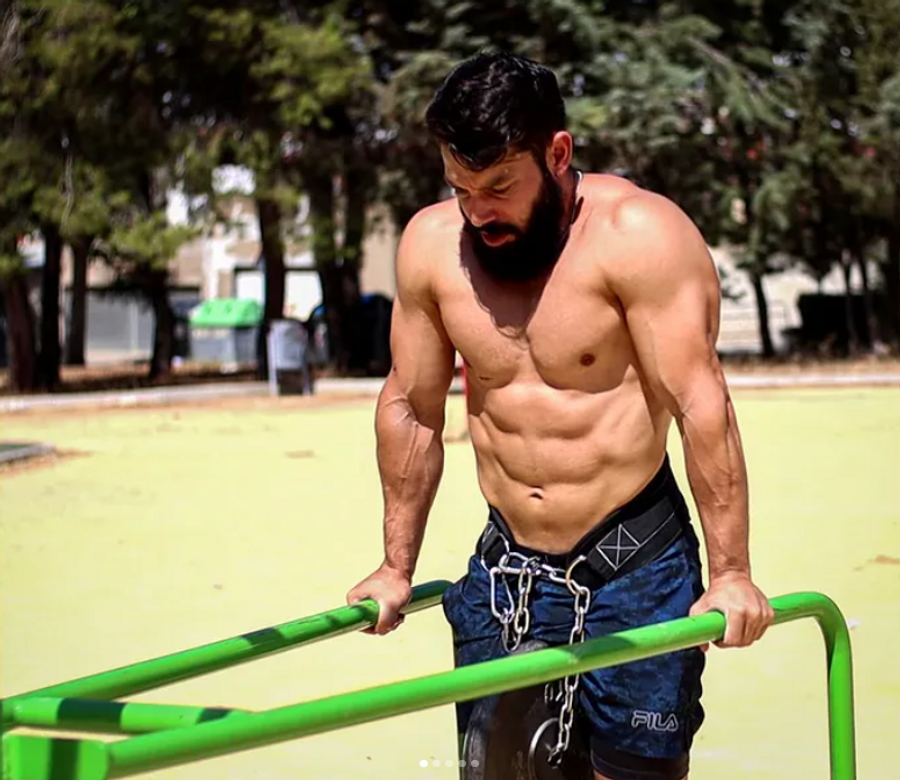
Is it mandatory to combine Calisthenics and Gym to obtain good results?
I think not, definitely not. I think it depends much more on personal preferences, on the adherence that each type of training generates and on how you distribute your planning, in addition, obviously on how disciplined you are to carry it out.
For example, if you do only calisthenics and you love it, you enjoy it, you have a great time, you are looking forward to the next workout and the gym is boring, it makes you bitter, you don't feel like training and so on... I think it's obvious that you will get better results training only calisthenics than combining both disciplines.
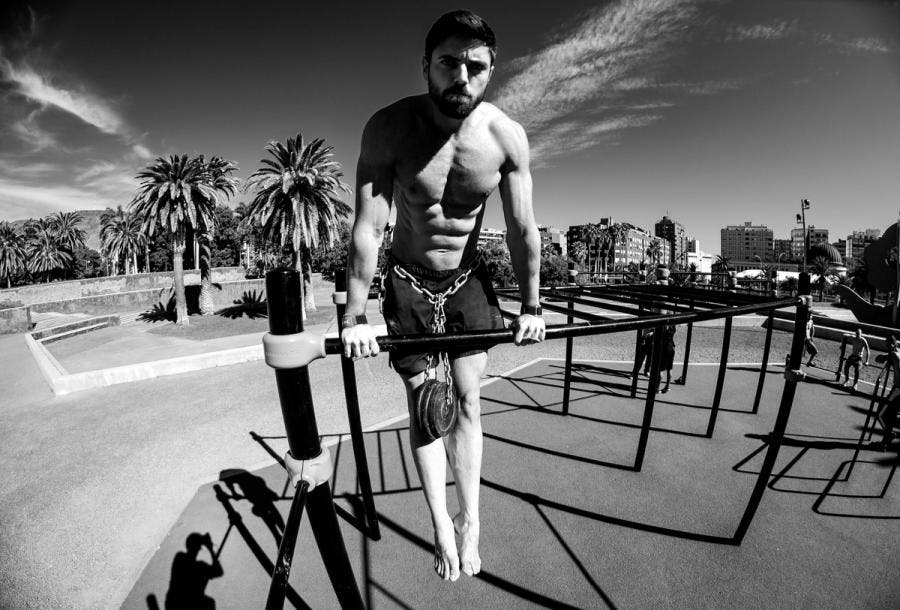
How to plan it?
We are now going to talk about how to concretely prepare the planning. In my opinion, if you are going to combine both disciplines with a strength-hypertrophy goal, I think the most effective is a push-pull-leg distribution. In fact, this type of planning seems to be one of the most common in the best natural bodybuilders in the world.
In addition, I would add a 4th day of compensation if you have any posture problem to correct, decompensation of a specific muscle group or you feel like having a lighter or more experimental day in your routine, we will see it in more detail below.
Why do I think this distribution is better? Because in calisthenics most exercises involve groups of muscles, and not isolated muscles. Additionally, many of the most common gym exercises also engage muscle groups.
Therefore, it does not make much sense to want to train only the pectorals, without involving the triceps, or only shoulders without involving pecs and triceps.
The same goes for the muscles of the back and the biceps and the muscles of the legs in general. Therefore it seems more logical to group them so that on push day you train pectorals, anterior deltoids and triceps. On the day of the pull, you train your dorsal, biceps, rear deltoids and the rest of the muscles of the middle and upper back. And on leg day (or days), train the entire leg in general.
I think that broadly speaking this distribution is simple but very effective, and if you detect any deficiency in it or think that you need more intense work on a specific muscle or muscle group, we would complement it with that 4th routine.
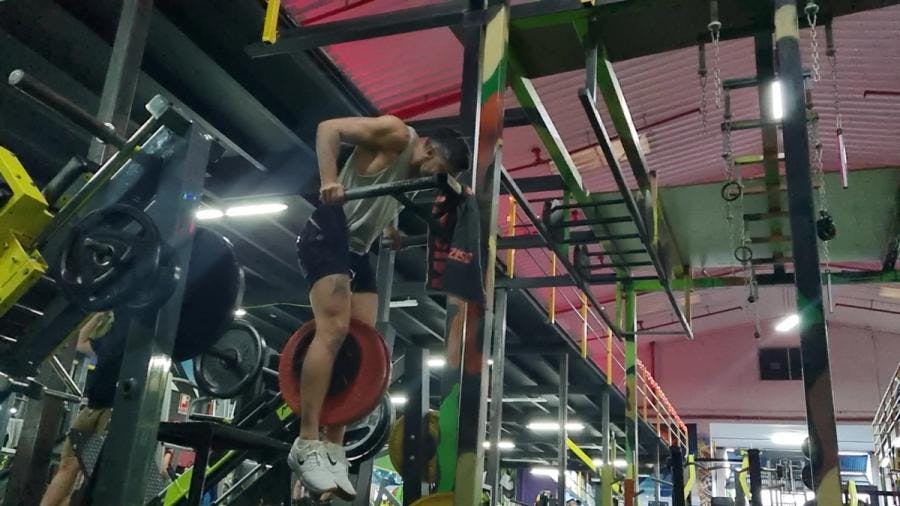
How to distribute each routine
Let's start with the push day, in which we can start with some difficult calisthenics exercise for the shoulders, for example some variant of handstand push-ups, assisted handstand push-ups or similar. In my case I am currently testing weighted handstand push-ups.
Then we can continue with weighted dips, in my case I do 3 series with a fairly high weight for few repetitions, pulling towards strength work, and then another 3 series with less weight for more repetitions, focusing more on hypertrophy work.
Then we would go to the gym part in which we would do 3 more exercises, with machines or free weights and focused on the pectoral, shoulder and triceps.
For example, we can do bench press and/or military press if you like working with free weights, or machines with similar patterns if you prefer working with machines.
In case we do a day of pushing in the park with only calisthenics, the idea would be a similar routine, in which we look for difficult first exercises with low repetitions, and then easier exercises with a higher number of repetitions. I leave you an example of one of my latest routines in case you want to try it on Calisteniapp.
As you can see, in total we would do between 15 and 18 sets, as for rest times, we will talk about it later and it will apply to all training sessions. Also later we will talk about how to progress in all the routines.
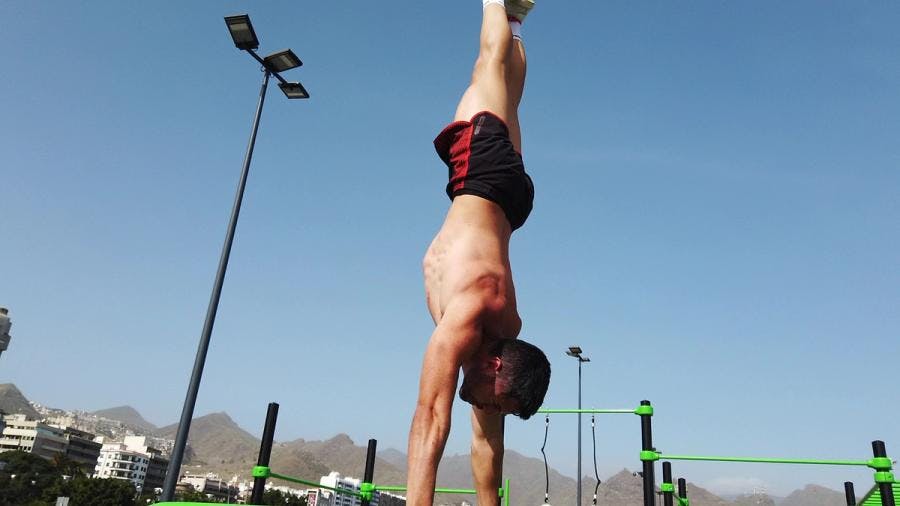
On pull day we are going to focus on weighted pull-ups, and if you have the necessary level you could also start with muscle up or weighted muscle up.
In my case, I start with weighted muscle up, then move on to weighted pull-ups, with the same approach as the dips, first with more weight for a few reps and then less weight with more repetitions.
Then we would continue with two or three more exercises with machines or dumbbells for the back and biceps, taking the opportunity to make sure that there is some horizontal pull, for example a Gironda row, or a specific machine or exercise for the rear deltoids.

In case we do pull only with calisthenics in the park, we will start with difficult exercises with fewer repetitions with variations of muscle up and difficult variations of pull-ups, for example, and then we will continue with easier exercises with more repetitions with easier variations of pull-ups. and Australian pull-ups or band exercises to make sure we have some horizontal pull. I leave you an example of one of my routines.
For leg day, what we will do is to use compound exercises at the beginning, such as squats, lunges or Bulgarian squats, which are exercises that are done a lot in calisthenics, but adding weight and then moving on to more specific exercises with machines such as leg extensions. quadriceps, femoral or calf curls.
In the case of the legs, as we can see, we do more sets than with the other muscle groups, since the legs endure more workload and you have to give them a lot of stimulus.
In the event that we do legs only with calisthenics, we must use difficult exercises, explosive exercises, and a large number of series and repetitions, in order to give it the necessary stimulus. I also leave an example of a routine.

Finally, as I mentioned before, we can add a fourth day of compensation. If you are a calisthenic athlete, on this day you probably need to include horizontal rowing exercises for the issue of internal rotation of the shoulders and posture (more info here), and an extra leg day.
If not, simply include the muscles that you see are lagging behind and need to be strengthened. In my case, I do a little bit of legs, including calves, some horizontal rowing exercise and a bit of biceps that I have a little behind compared to the rest of the upper body.
Sets, reps, rests, deloads
Now we are going to talk about the number of series, repetitions, rest times and a few more things.
In order to gradually apply progressive overload, in this planning what I am doing is leaving a fixed number of series in each training session and what I am modifying is the number of repetitions and the weight that I move or the difficulty of the exercise. Always writing down what I do in each routine and if I could complete it or not, in my case I do it in an excel file on the computer.
As you saw in the routines, I normally do about 15 or 16 series in push and pull training, and 30 series in leg training.
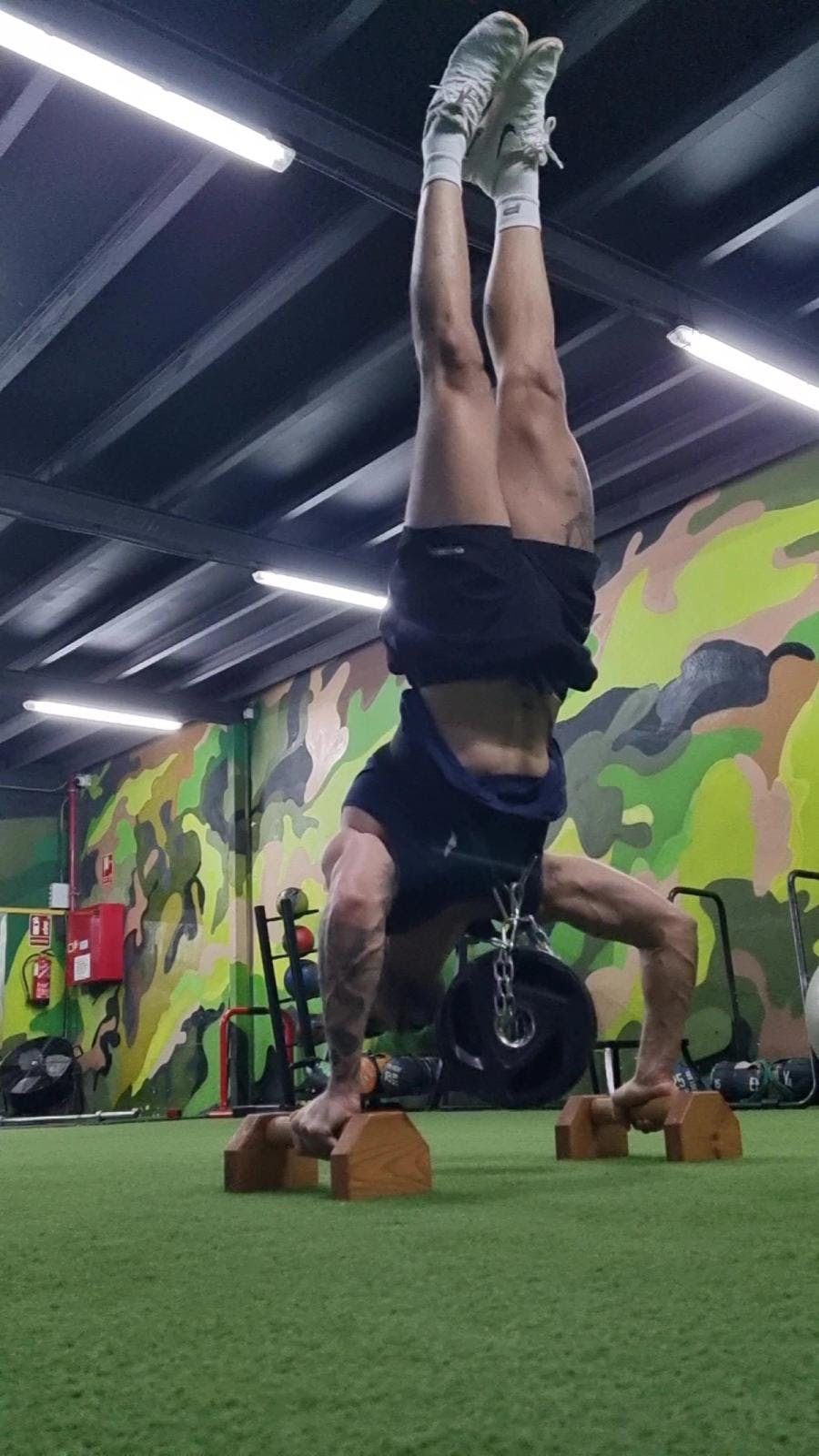
As for the repetitions, in the most difficult exercises or with more weight that focus more on strength I vary between 1 and 5 repetitions, and in those that tend more to hypertrophy I vary between 6 and 15 reps in those that I do in the gym, and between 6 and 30 reps in some cases of exercises with body weight.
And with regard to rests times, being a focus on strength and hypertrophy, I do rests between intermediate and long, from 1'30” for the shortest, in exercises that are easier for me, up to 3' in the most difficult strength exercises.
Finally, every 6 – 8 or 10 weeks I do a deload, in which I am between 3 and 5 days without training or training very lightly, doing mobility and flexibility and so on. I also take this opportunity to tell you that I always do some mobility and flexibility during warm-ups and cool-downs, and I consider that it is quite important so that they do not have rigid bodies that are not very functional.
As you can see, there are days when I go to the gym and combine calisthenics and gym exercises, but there are days when I feel like going to the park and training there, for one reason or another, and I enjoy it a lot while I do some very tasty routines.
To finish, remind you that in Calisteniapp we have a section of routines with added weight that can be useful to you.
Autor

Yerai Alonso
Cofundador de Calisteniapp, referente en calistenia y el street workout en Español. Con más de una década de experiencia, es creador de uno de los canales de YouTube más influyentes del sector. Autor del libro La calle es tu gimnasio, campeón de Canarias y jurado en competiciones nacionales e internacionales.
Junte-se ao nosso boletim informativo
NOVOS ARTIGOS TODA SEMANA
Aprenda tudo o que precisa saber sobre calistenia
Calisteniapp
Comece a treinar calistenia e treino de rua
